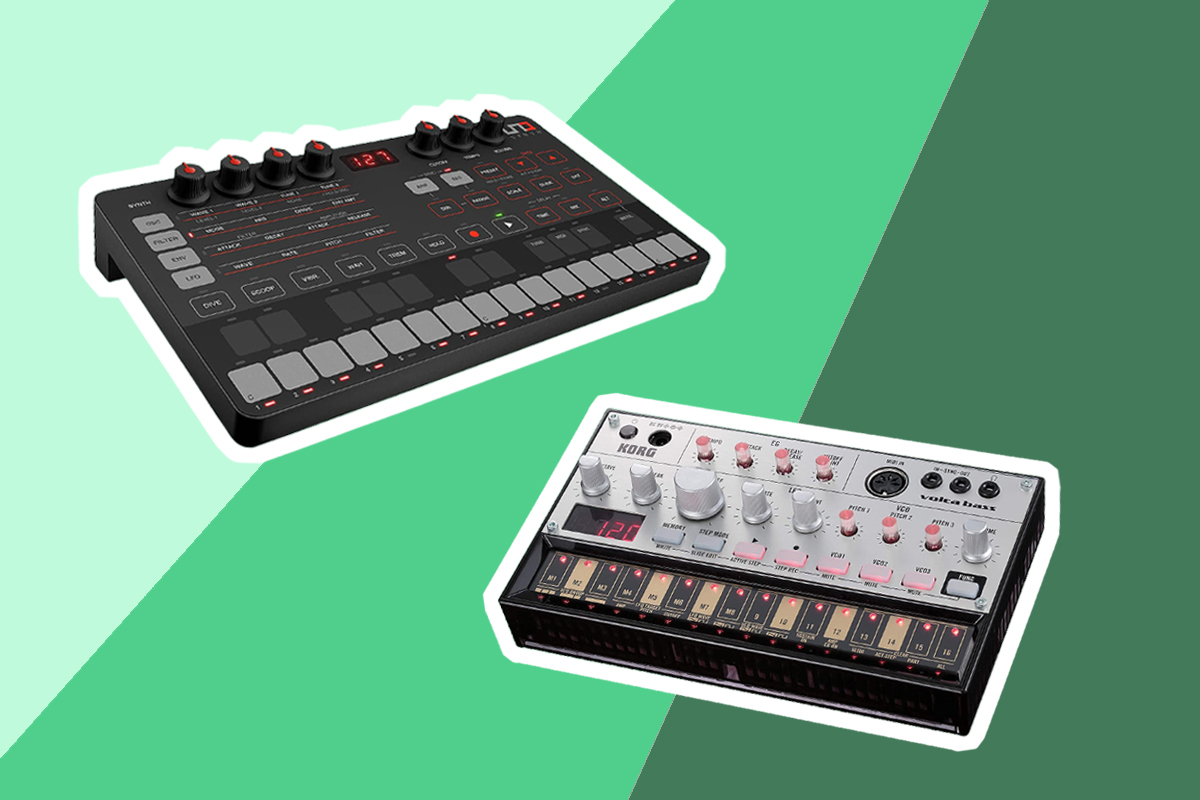
Have you ever dreamed of becoming a music god or goddess? With a synthesizer, you can. Synthesizers— or synths, as they’re commonly called— are awesome electronic instruments that are becoming more popular by the minute.



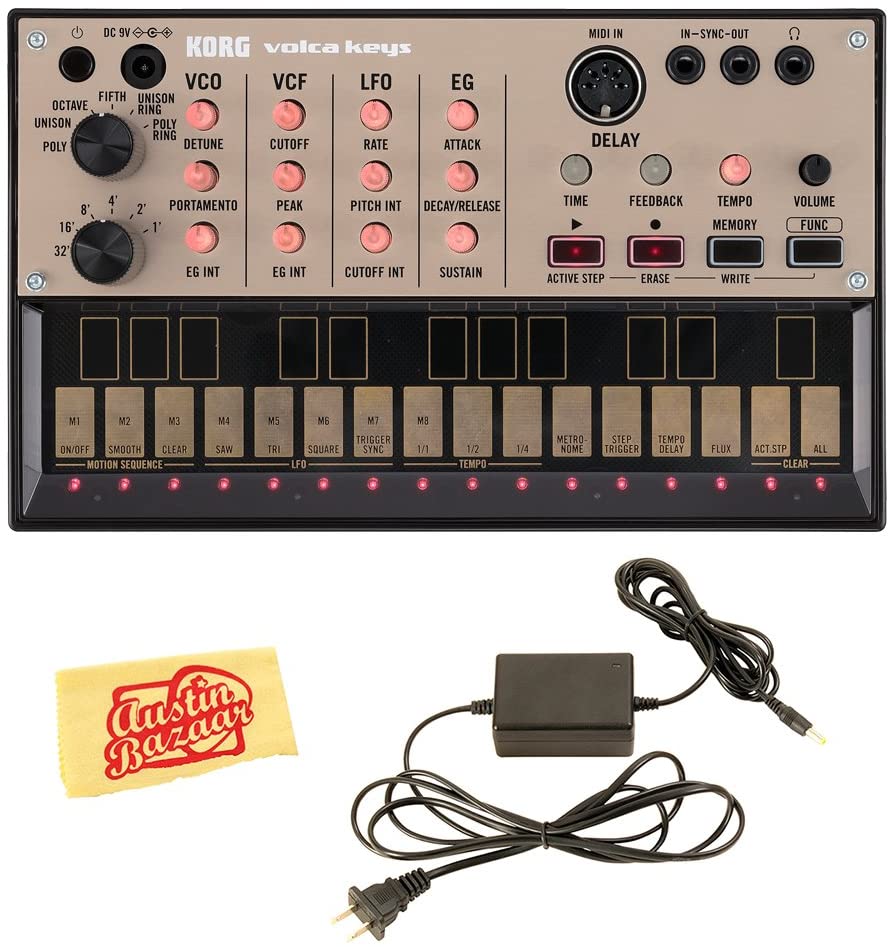

Some of the top-of-the-line synths can be pretty pricey, but opting for a cheaper model still gives you nearly all of the benefits of more expensive synths. We did a lot of research to test out all of the best synths under $300 and compiled a list of our favorites, just for you. Some of the things we looked at include power, keys, presets, compatibility, and more.
More features: velocity-sensitive, editing software included, dedicated octave up and down buttons

This compact synth is roughly 13 inches wide and weighs a little less than a pound. It comes with its own editing software— although it is also compatible with many of the most popular editing software on the market today. This is powered via a USB connection with your computer, and a USB cable comes included.
This model is best suited for anyone who is relatively new to synths but still has a basic understanding of music theory (or an eagerness to learn). This model is very small and compact, which makes it great to travel with. It especially shines, however, as a highly functional synth for a home studio setup. If you’re considering synths under $300, you’re likely at a level where you’ll be able to get pretty much everything you need from this low-cost model.
More features: portable, monophonic, 2 oscillators and a multimode filter, multi-mode filter, step sequencer
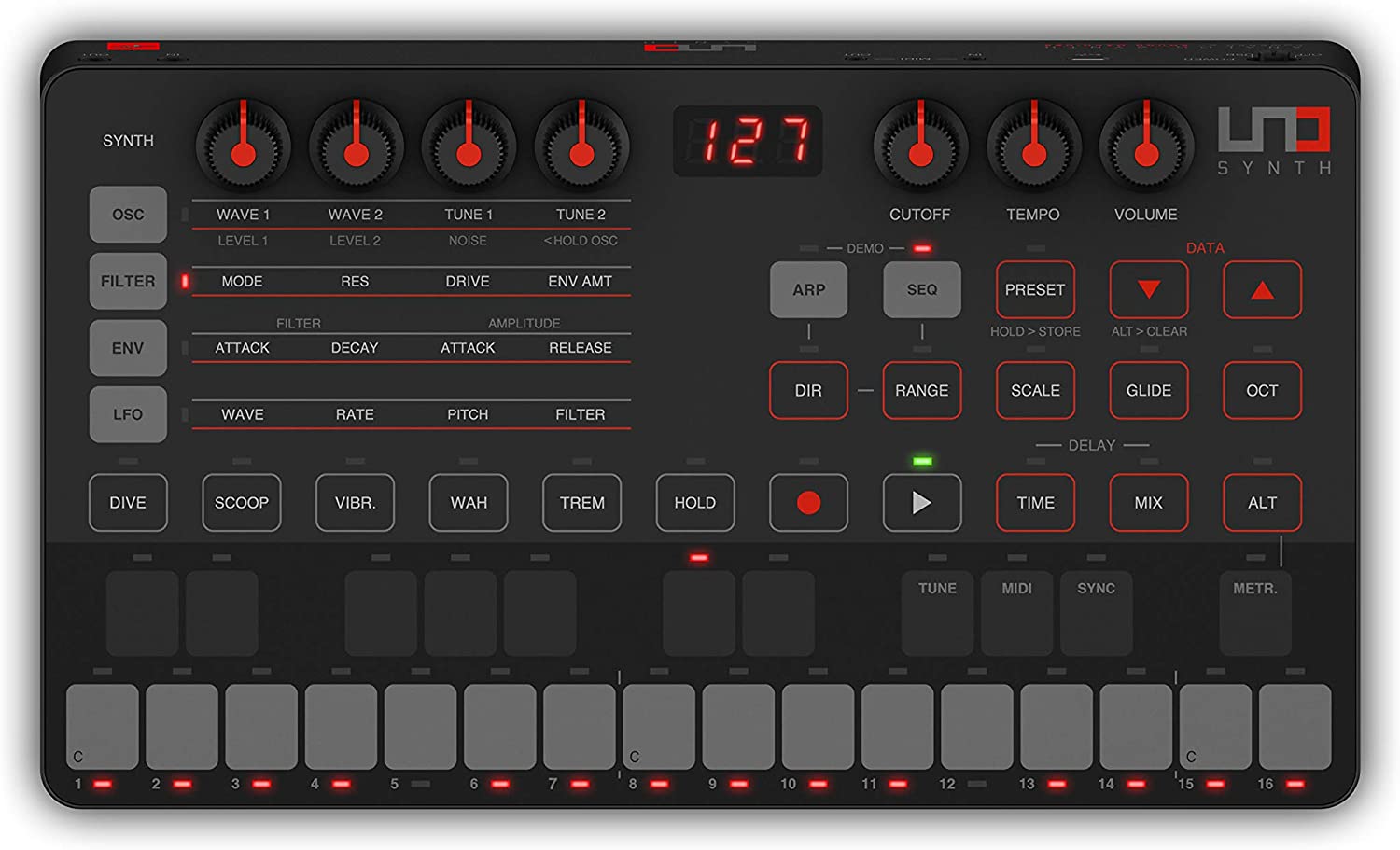
This synth is also small, although it feels a bit cheaply made. It comes with a lot of presets and can be battery or USB connection cable powered.
This is a great model if you have a lot of time to get to know the buttons and overall function pretty well. This is also a good choice if you want the option of powering it with AA batteries or via a USB connection. It’s a good choice if you want to play around with cool presets.
More features: voicing function, compact, loop sequencer

This synth is an analog synth that can be powered by a battery or wall cord and offers cool features like a loop sequencer and voicing function.
This is great for someone who wants a low-cost synth that can function at the highest level or someone specifically looking for an analog synth with a retro feel. This synth is maybe not the best for total beginners, but you could certainly learn quickly if you were determined.
More features: analog oscillators, 16-step sequencer, crisp sound
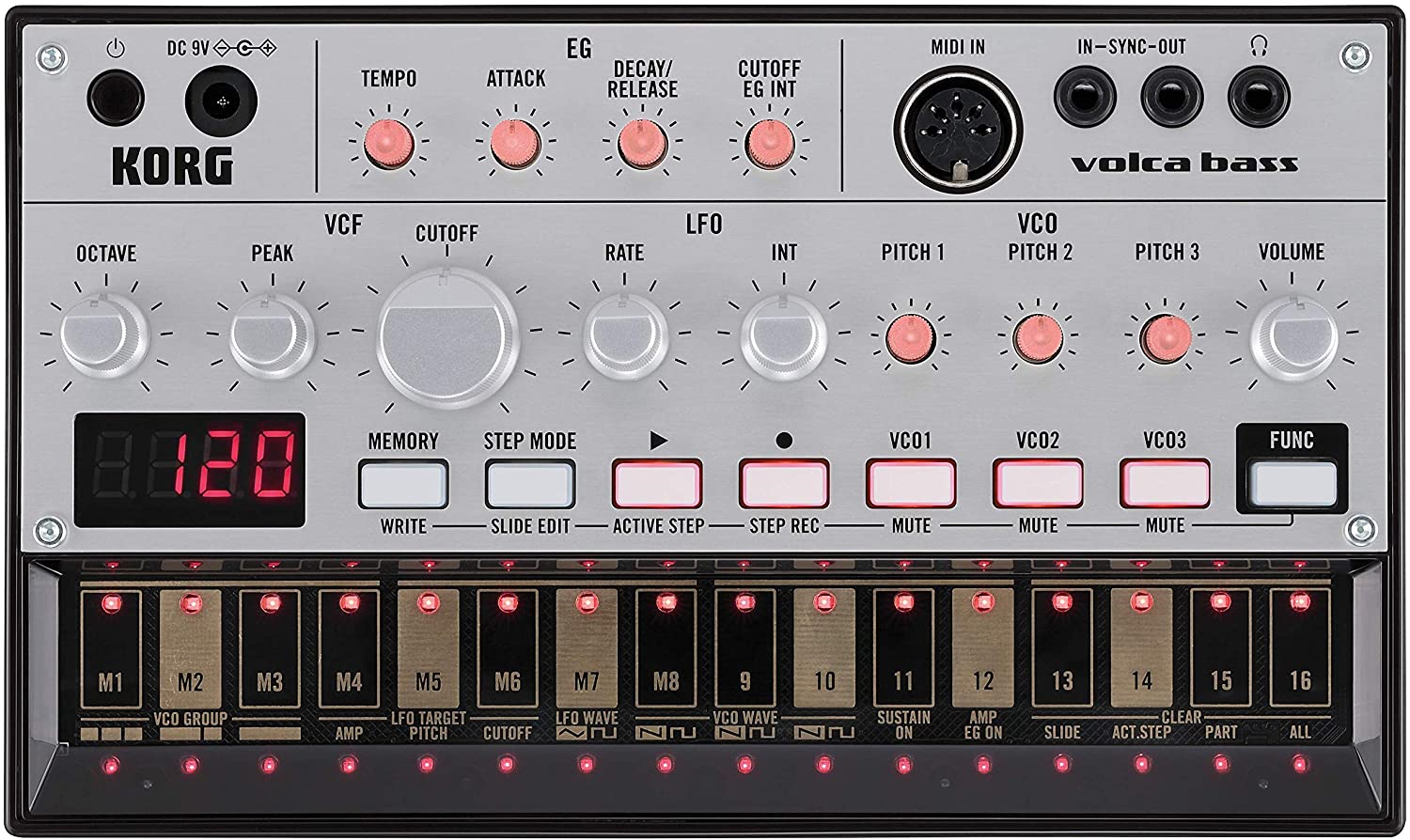
This tiny guy packs a big punch in sound with its keyboard and external speakers that make it perfect for on the go or in-studio jamming. It comes with 100 sample sound presets and has 8 slots for custom sequence recording, allowing you to achieve pretty much all of your synth audio dreams.
This is a great synth for anyone who is looking to find a synth with a lot of personality at a low price. Its keyboard makes it easy to noodle with it on the go, and some features can even be externally controlled using MIDI.
More features: authentic reproduction, true analog circuitry, pure analog signal, 4-pole low-pass resonant filter, 16-voice Poly Chain
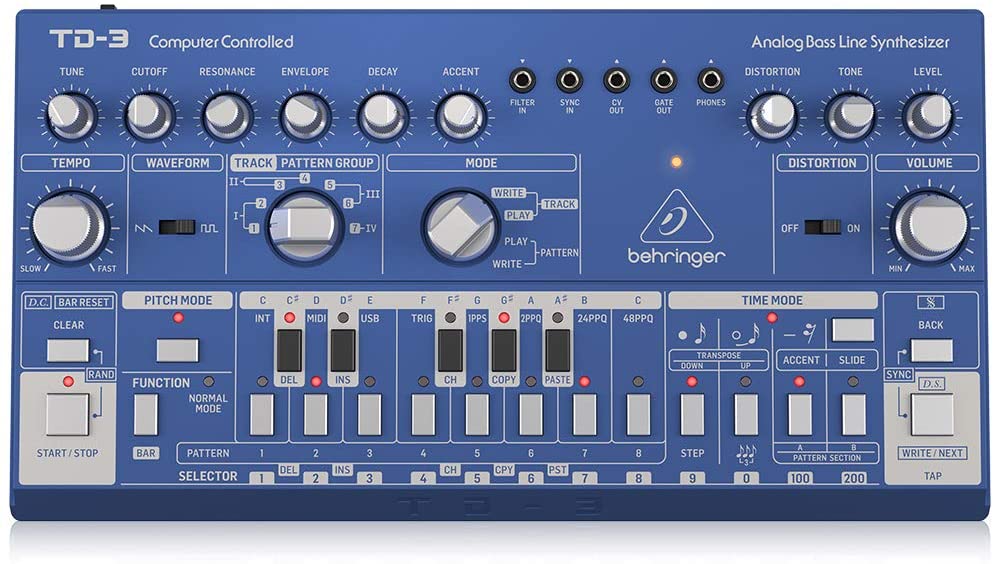
This model is a near-exact replica of the beloved Roland TB-303 and outperforms even Roland’s own (all digital) reboot of the 303. It has a ton of great features and true analog sound, plus a 4-pole low-pass resonant filter and a 16-voice Poly Chain.
This is great for anyone who wished they could have had a 303 but never got the chance, or for someone who wants a truly top-class analog synth that has a ton of features and a lot of room to play and grow.
More features: velocity-sensitive action keys, software included

This model is super compact and weighs only 500g. It has included software and is compatible with a lot of the most popular editing software like Logic and Ableton Live.
This is great for someone who is really looking to save on their synth and who may also want to play a normal keyboard on occasion— not just synth. It has a few great features and an unbeatable price point that make this one a real winner for any beginner.
More features: DIY module
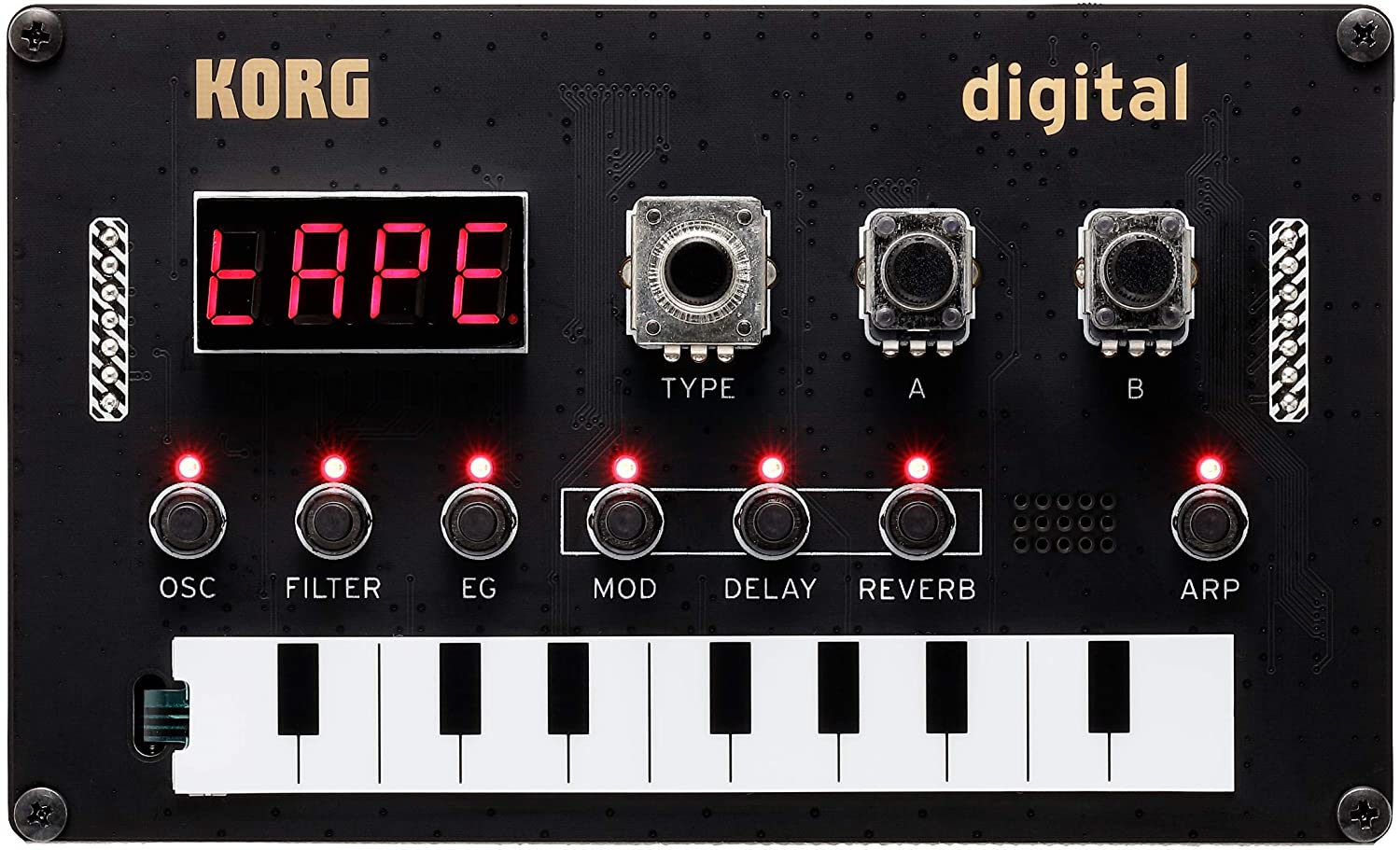
This teeny-tiny synth comes with 18 keys and can be modified and added to with various oscillators and effects. This is great for anyone looking to go the DIY route with their synth and truly customize their experience and capabilities. There’s a lot of room for growth and change with this model, and it’s a lot of fun for anyone with some experience working with synths and music theory.
When compiling this buying guide for the best synth under 300, we examined a lot of key features to decide what would make a list and what didn’t quite make the cut. Many of the key features we looked at include the presets, the keys, the size of the synth, the compatibility with editing software, the power source, and a few other things that are described in more detail in the review portion this list.
If you’re new to music-making and eager to get your hands on your first synth, it can be really tempting to blow a bunch of money on a super expensive model with a lot of crazy features. That’s totally not necessary, though, and many of the most experienced pros even prefer using some of the lower-priced models simply because they can keep up with the pricier synths any day. You can get a lot of super cool and useful features in a synth that costs under $300, and you are sure to find one that you love from this helpful list.
There are many important features to consider when purchasing a great synth Trusted Source Synthesizer - Wikipedia Synthesizer-like instruments emerged in the United States in the mid-20th century with instruments such as the RCA Mark II, which was controlled with punch cards and used hundreds of vacuum tubes. The Moog synthesizer, developed by Robert Moog and first sold in 1964, is credited for pioneering analog synthesis concepts such as voltage-controlled oscillators, envelopes, noise generators, filters, and sequencers. en.wikipedia.org for under $300. If you’re new to the world of synths, here are some of the features you should look for and decide based on what sounds right for you and your musical needs.

A traditional full-sized synthesizer features a whopping 88 keys, but you won’t find any with nearly that many on this list. Some MIDI keyboards, like the Alesis Qmini— our choice for Best Value— have as few as 32 keys, but you can adjust the octave and pitch with buttons on the synth house.
Synth presets Trusted Source Preset | Electronic Music Wiki | Fandom A patch pre-loaded into the memory of a synthesizer by the manufacturer. The patch may be loaded into RAM, where it can be edited or overwritten by the user, or into ROM where it is always present and can’t be edited without copying it to a RAM location first. electronicmusic.fandom.com are pre-loaded patches of sound that come programmed into the synthesizer from the manufacturer. Sometimes you can overwrite presets on a synth, but sometimes this is impossible. The IK Multimedia UNO Synth, our choice for Premium Pick, has over 100 different presets to choose from, making it super fun to play with and experiment with your music style and taste.
Professional producers frequently use synth presets, and their convenience doesn’t make them any less worthy of being included in your awesome tracks.
Synth compatibility is important if you want to edit or make your music using the software you already own or software that comes with the synth. Many synths are compatible with several of the biggest names in music editing software. Our editor’s choice, the AKAI Professional LPK25, is compatible with all of the most popular software on the market.
Some synths are battery powered, some are wired powered, and some offer flexibility and can be powered either way you choose.
If you’re only planning to work in a studio, the power source doesn’t really matter all that much (unless you don’t have electricity).
This is a more important factor if you plan to jam out on the go and want to use batteries to play with your synth at the park or the coffee shop. The Korg VOLCABASS Analog Bass Machine, the best external digital synth under 300$, can use batteries and a cord, which makes it super versatile.

Most of the synths on this list are super-compact but don’t let that fool you. Despite their small size, many of them, like the Korg Nu:tekt NTS-1 Monophonic DIY Synth Kit are super small and also highly functional synths. Many of the pros use a lot of the tiniest synths, so don’t go thinking that a bigger synth is necessarily better. One of the cool things about making music with synthesizers is that the only limit is your creativity, not the size of the machine.
There are so many important things to consider when buying your first synth. We looked really closely at many of the key features that pros use to determine which synth to purchase, including size, number of keys, software compatibility, power source, presets, and so much more. Many of the synths on this list are highly functional despite their affordable price tags, such as AKAI Professional LPK25 or IK Multimedia UNO Synth, and any of them is sure to help you create the music you’ve always dreamed of making. Whether you’re a total beginner or a seasoned music-producing veteran, we’re sure you’ll agree with our verdict for the ranking of these awesome, low-cost synths under $300, like or Best Value Alesis Qmini. We had so much fun compiling this ultimate list of the very best synths under $300 for you, and we hope you love one of the synths on this list.